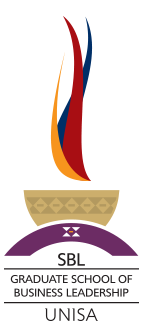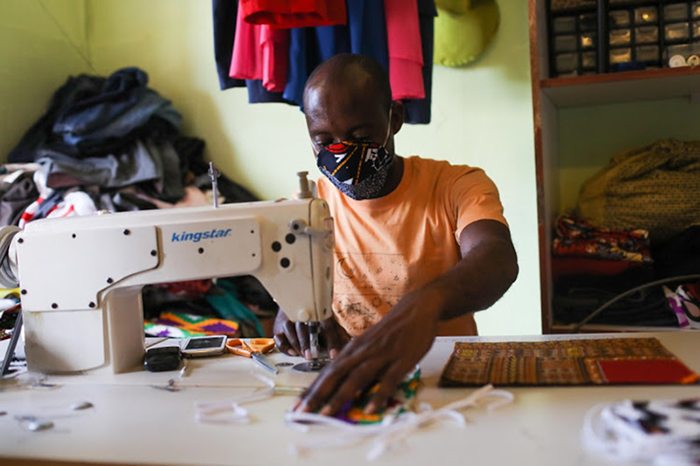

A worker sews face masks in Joburg. SMMEs such as these have been hard hit by Covid-19, and need support to survive.
Picture: Alaister Russell/Sunday Times
Small-, medium- and micro-enterprises (SMMEs) are important to the SA economy and its recovery. Many of these businesses were struggling even before the Covid-19 pandemic, and if they are not given the support they need, their future sustainability will be in question.
A recent Business Day Dialogues LIVE, in partnership with the Unisa Graduate School of Business Leadership (Unisa SBL), focused on SMMEs and how they have been affected by Covid-19: job losses, redundant skills and the essential proficiencies required for an economic recovery.
The pandemic created an economic shock that surpassed the global financial crisis in 2007 and 2008, said professor Pumela Msweli, Unisa SBL executive dean and CEO. SMMEs have been even more susceptible to these shocks than larger businesses.
SMMEs have had to adapt rapidly, and the Unisa SBL has been looking at how it can help to equip them with the necessary skills to cope with these challenges. The solution: an urban-rural linkages programme that aims to link urban businesses with rural SMMEs.
"SMMEs are a source of growth for the future," said Msweli. "This is demonstrated by their growth of more than 12% for the past six years. SMMEs, which collectively account for about R2-trillion of turnover each year, have potential to aid SA in its economic recovery."
The informal trade—which has not traditionally been categorised as part of the SMME sector—accounts for between 30% and 40% of total trade within the Southern African Development Community (SADC), and creates more than 70% of employment in the SADC region.
"Urban-rural linkages is about capacitating SMMEs and helping to grow cross-border trade," said Msweli.
The Unisa SBL has established a business leadership clinic to transfer skills from its students to SMMEs. It’s an opportunity for students to put into practice the theory that has been taught to them, and benefits the SMMEs with critical skills transfer. Student involvement with these SMMEs forms part of their academic assessment.
"The aim is to find real solutions to real problems," said Andile Nobatyi, Unisa SBL head of the academic portfolio.
Navigating the new normal, said professor Neha Purushottam, a specialist in sustainable livelihoods, requires upskilling, reskilling and acquiring the skills required of e-commerce.
Morafe Tabane, an expert in intra-African trade & investments at Unisa SBL, said the urban-rural linkages programme and business clinic has a role to play in facilitating and growing intra-African trade and investment.
The African Continental Free Trade Agreement (AfCFTA)—which became operational on January 1 2020—has come about at an opportune time, she said. Unisa SBL’s programme aims to assist micro-enterprises to take advantage of the opportunities presented by AfCFTA.
Andre Marrian, Unisa SBL head of operations, said it’s important that SMMEs select the right tools to help them with their digital migration, given that digital skills could help them to grow.
Unisa SBL operates in a competitive and saturated market. What differentiates the school is its strategy of prioritising SMME skills, particularly through the urban-rural linkages programme, which aims to help with SA’s economic recovery.
Covid-19 has pushed the school to become more agile both in terms of its structure and processes, and has resulted in a more streamlined operation. Given that much of the theory typically taught in business schools is rapidly obsolete, Unisa SBL has focused on developing an entrepreneurial and market-orientated mindset, said Msweli.
This article first appeared on Business Live on 8 March 2021 and is used by permission. You can read the original here.
Publish date: 2021-03-10 00:00:00.0
Contact the Marketing and Communication office: Ms Thami Kaunda at kaundn@unisa.ac.za
011 652 0339
Telephone: +27 11 652 0248 / +27 11 652 0291
Email: sbl@unisa.ac.za
Physical Address:
Cnr Janadel and Alexandra Avenues
Midrand, 1686
Gauteng, South Africa
Download map & directions (PDF)